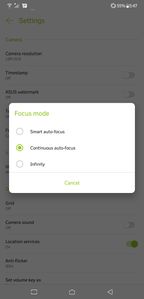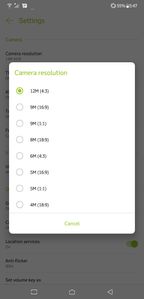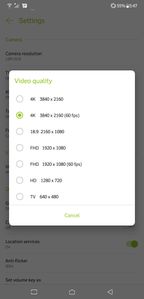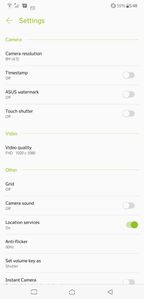
This is the fourth article in a series of detailed posts on the ASUS Zenfone 5Z. In the first article, you read in detail about the design and software. We followed that up with an overview of the display and build quality. In the previous article, I told you about the performance and battery life aspects of the phone. In today’s article, let us delve deep into the camera and the image quality that you can expect from this device. You will also be able to check out how the camera software experience on the handset is. Let me start off things by talking about the camera specifications first.
ASUS Zenfone 5Z: Top notch camera hardware
The Zenfone 5Z features a dual camera setup at the rear that consists of a primary 12-megapixel camera. The sensor that ASUS chose for the 5Z is Sony’s flagship grade IMX 363 sensor from their Exmor RS series. This is a large ½.55-inch sensor with a 1.4um pixel size. To enhance low light images, the phone uses a wide f/1.7 aperture. This should also technically allow the phone to capture images with great background blur. This primary camera supports phase detection autofocus as well as 4-axis optical image stabilisation. This primary camera can also be used to record 4K videos at a maximum frame rate of 60fps. This is also the camera that records slow motion videos in full HD resolution at 240 fps.
The secondary camera at the rear happens to be a wide angle lens that has a 120-degree field of view. It has a 12mm focal length as well. This secondary camera can also be individually used to record videos in wide angle. The maximum resolution in this mode, however, is 1080 x 2160 pixels at 30fps.
The front camera is perhaps the Zenfone 5Z’s Achilles heel when compared to its archrival, the OnePlus 6. This is an 8-megapixel sensor with an 84@ field of view and a 24mm lens with f/2.0 aperture. This camera can also record videos at a maximum resolution of 1080 x 2160 pixels with a 30fps frame rate.
Let us check out the camera UI
Zenfone 5Z Camera UI: Intuitive and Easy to use
The camera UI on the Zenfone 5Z is very easy to use. Upon opening the camera app, all the frequently used settings are easy to access. These include the option to turn off/on or keep the HDR mode in auto, the option to change the image aspect ratio, the timer, and the depth effect mode. The settings button at the corner lets you fine-tune the camera settings. There is also a dedicated pro mode button that can be used to access the pro mode quickly. You can also use the ‘mountain” icon to switch between the primary and the secondary cameras. Swiping right reveals the various filter options while swiping right takes you to the menu where you can access modes like the super-resolution mode, the GIF animation mode, the time lapse mode and the slow-motion mode. Note that depending on the camera mode you are in the options inside the swipe left menu changes.
In case you are a selfie freak, the phone also ships with the ASUS SelfieMaster app that allows you to turn the beauty effects on in live videos. This app also lets you access Zenmojis which frankly, I did not use much, but could appeal to the younger audience.
Zenfone 5Z: Excellent image quality, front camera could have been better
Although I liked the wide-angle camera on the Zenfone, most of the time I found myself using the primary 12-megapixel camera. This camera had a decent dynamic range and in almost all the conditions got the colour reproduction right. However, I did notice that the sensor had issues with the difficult subjects like foliage and leaves and wasn’t able to retain the details when cropped to 100%. I wasn’t able to test the phone in good lighting conditions thanks to the ongoing monsoons.
In the gallery below, you will see how the dynamic ranges changes when I switch between the HDR and no HDR modes
Low light images using this camera were usable and I noticed the distinct lack of noise. However, where the camera loses out is in deciphering the details. The phone also comes with a portrait mode on the front camera which is useful. However, the 8-megapixel sensor was incapable of capturing the finer details of my face. Unlike the primary rear camera, the front camera suffered from colour artefacts and noise under low light conditions. ASUS has also jumped onto the AI bandwagon with the Zenfone 5Z. However, I did not find a way to turn this off. The only way to get around the always-on AI is to switch to the Pro mode.
Here are a few low light image samples
Let us take a look at some images captured using the front-facing camera
As far as the video performance is concerned, I was pretty happy with the 4K 60 FPS mode. Audio quality from the built-in microphone was good. I did not, however, test it out in loud environments.
In Conclusion
The ASUS Zenfone 5Z ships with a decent camera. While it is a notch below the ones found on more expensive flagship-class devices, I will not let this affect my buying decision because of the price at which the phone retails. Also, keeping in mind ASUS’ history with excellent and timely software updates, there is good chance that the camera on the Zenfone 5Z will deliver better results in the future after the company fine-tunes the camera software.































